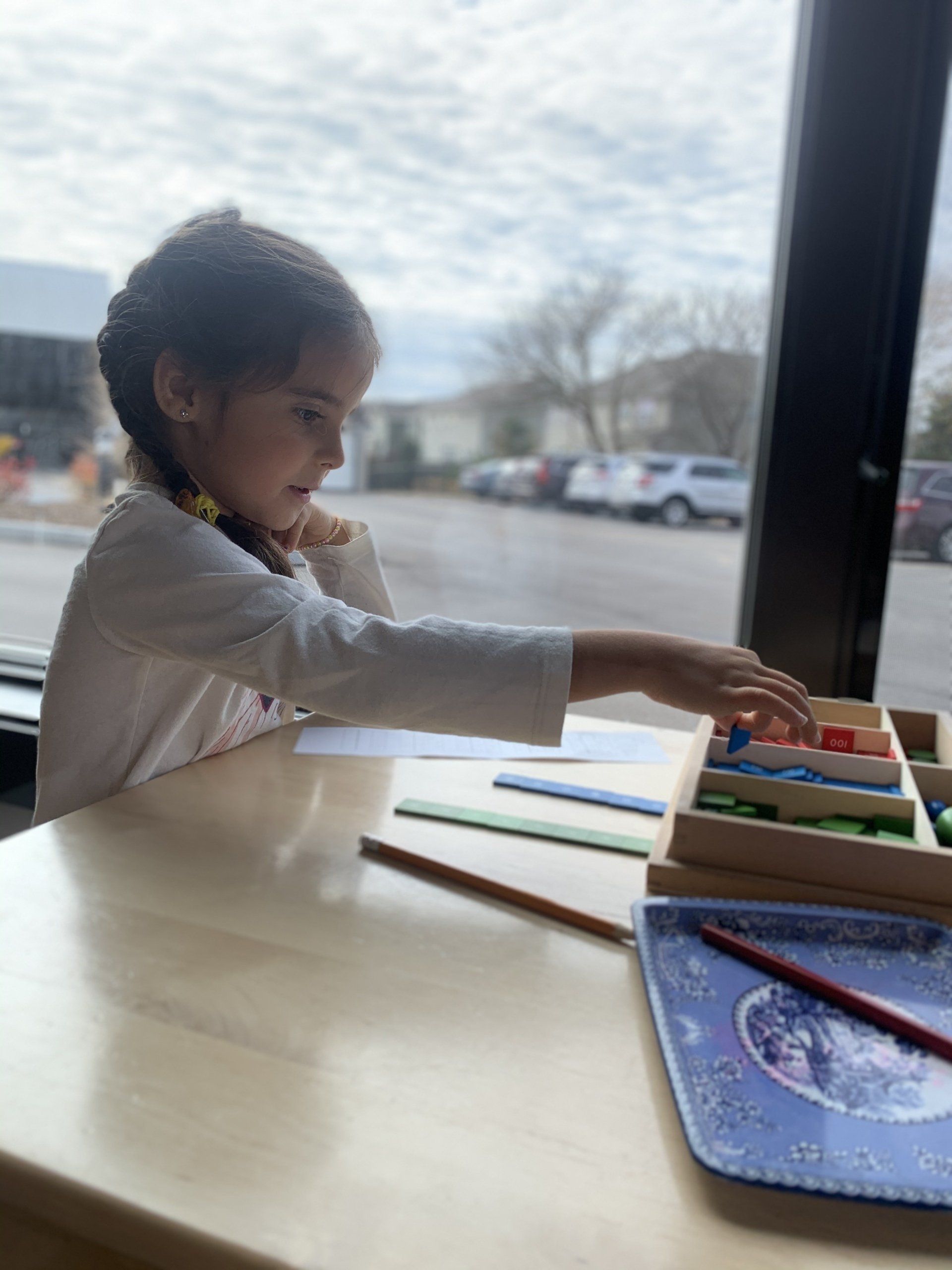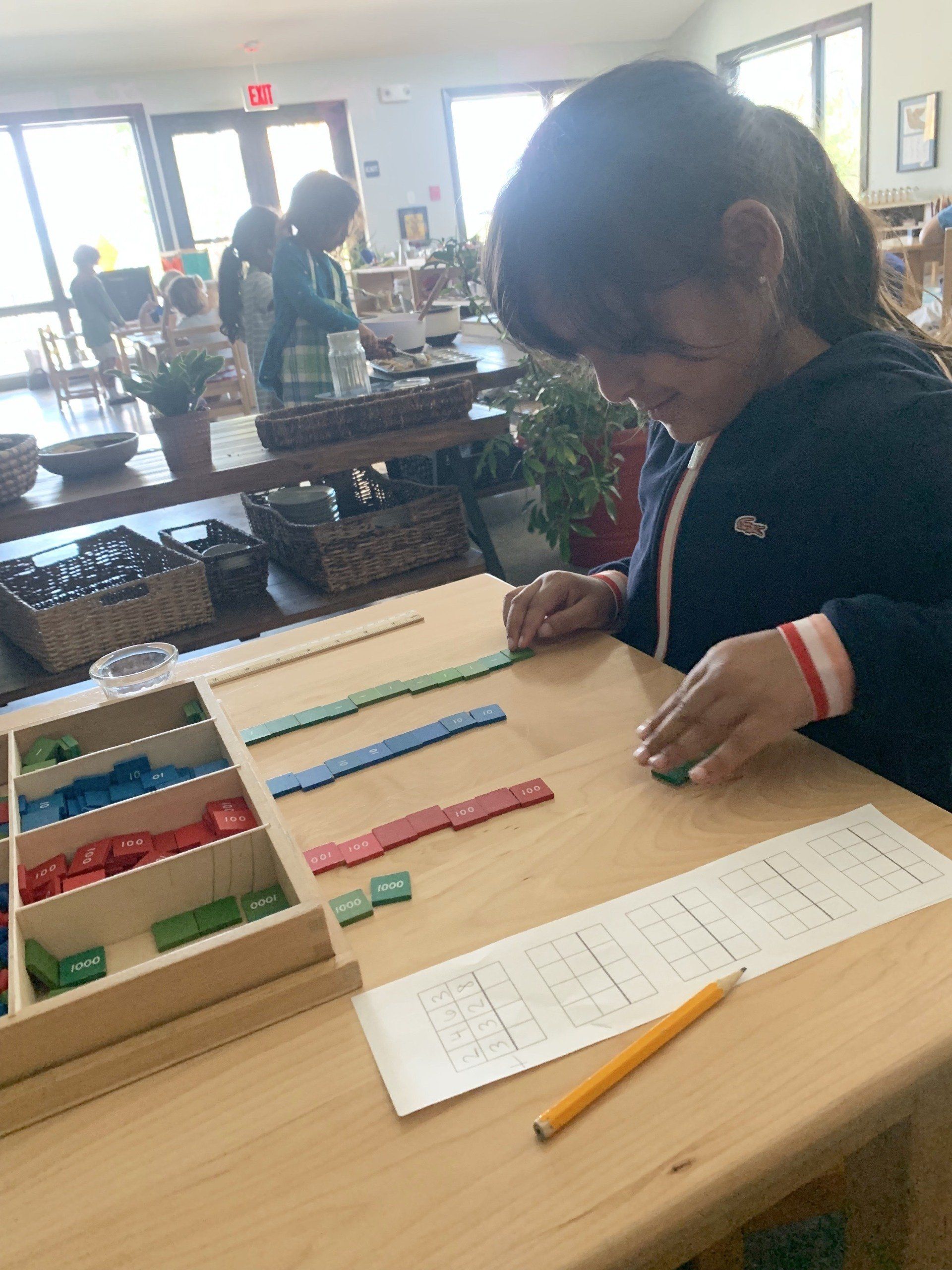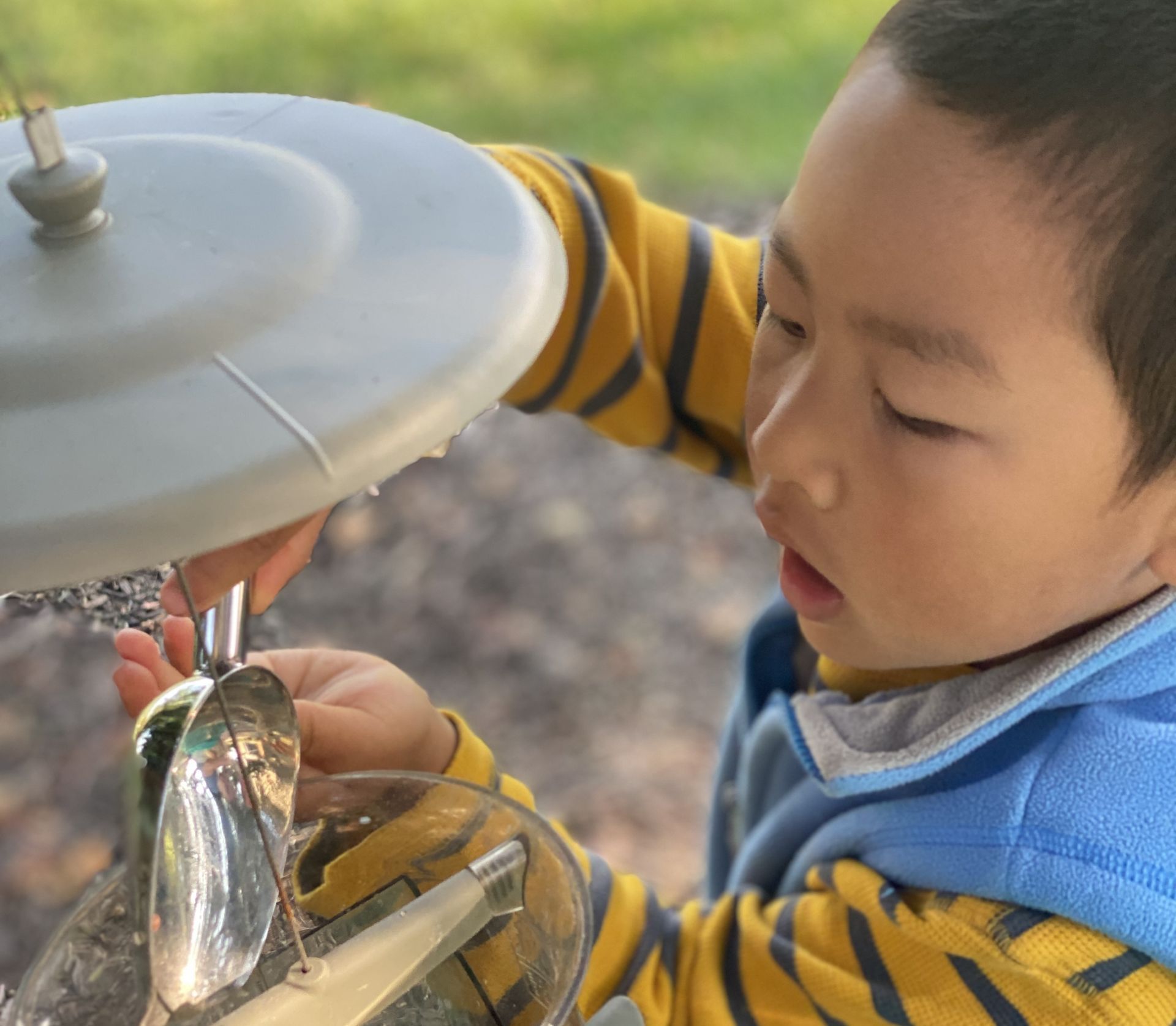Dr. Maria Montessori, like Blaise Pascal, believed the two aspects of the human mathematical mind were intuition and exactness. She also believed the human tendency toward exactness was another proof of the mathematical mind. For today’s young Montessori student, math, with its rich variety of hands-on materials to manipulate, examine and manipulate again, is a world of sensorial discovery. All of the mathematical materials involve the tendencies for manipulation, exactness, repetition, order, movement and self-perfection. In the classroom, mathematics begins around age four. The child has been working in the other three areas of the classroom for one to one and a half years (Practical Life, Sensorial and Language). These three areas have provided the preparation for the work in the math area.
Some of the direct aims of the math materials are:
- Order
- Concentration
- Coordination
- Independence
- Predictability
- Exactness/Sense of Accuracy
- Concreteness
- Logic and Reasoning
- Problem Solving and Decision-Making Skills
- Further Development of the Mathematical Mind
- Further Development of the Intellect
- Further Awareness and Appreciation of our Number System
Some of the indirect aims of the math materials are:
- Temporal Relations: i.e. Math Operations
- Spatial Relations: i.e. Formation of Numbers, Operations
- One-to-One Correspondence: i.e. Numeration, Linear Counting
- Combination: i.e. Addition, Multiplication
- Differences: Inequality
- Similarities: Equality
- Gradation: Greater than, Lesser than
The Montessori math materials are quite impressive. We have the mathematical material in the primary classroom because Dr. Montessori saw–through what the children showed her and as part of human nature–that each human being has a mathematical mind; therefore, we should train it and use it. The children liked numbers; quantity; and they started asking relative questions.
The following indirect preparations help the child with further exploration in mathematics: a logical and orderly mind; the ability to concentrate; a good memory that is guided by reason and attention to detail. The math materials follow the same general pattern when presented to the children: first, the quantity is presented in concrete form, followed by the child’s own work with the material; then, the corresponding written symbol is introduced, followed by the child’s own work with the material; finally, the concrete and the graphic symbol are combined giving the association, followed by the child’s own work with the combined material.
In the Mathematical area there are six groups and each deal with a separate concept. The six groups are:
- The Foundation—Numbers One to Ten
- The Decimal System
- Linear Counting
- Memorization
- Towards Abstraction
- Fractions
Below we will highlight a Montessori work: The Stamp Game .
The Stamp Game takes what the child has experienced with the Golden Bead material and puts it into a more abstract form. (The Stamp Game comes toward the end of the exercises in Group II–the Decimal System.) It is the first time the child sees not only the written symbol of the 4 operations, but also the first time the child writes equations on paper. The square or tiles of the Stamp Game are referred to as ‘stamps’ because they are the size of a postage stamp. The tiles color-coordinate to the numbers that were read in the Golden Beads: units and thousands are green; the tens are blue and the hundreds are red.


DIRECT AIM:
- To give the child an opportunity to carry out individual exercises with the decimal system.
- To give the child further understanding of the four operations.
- It is a step towards abstraction since only written symbols are used rather than beads.
- To introduce the child to the operational signs used in our mathematical language.



